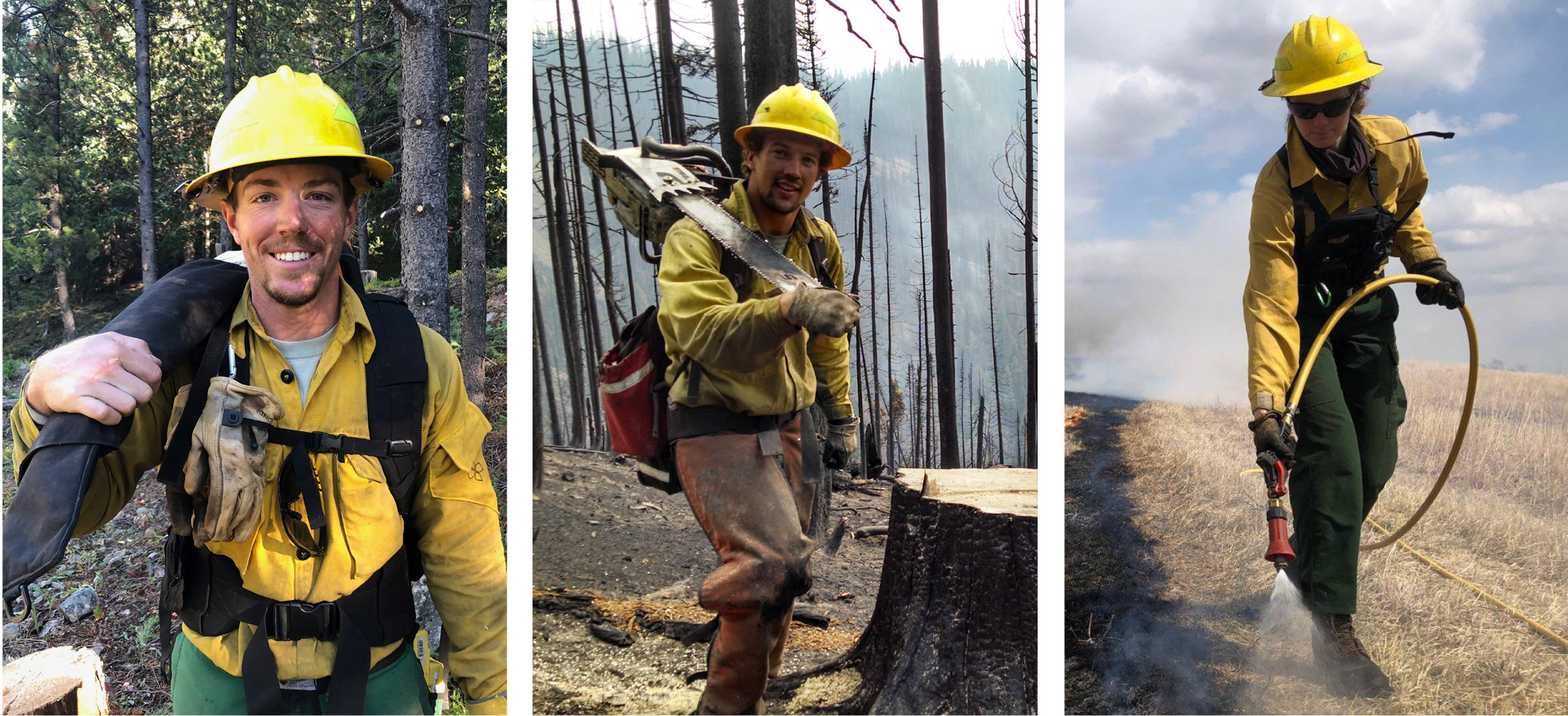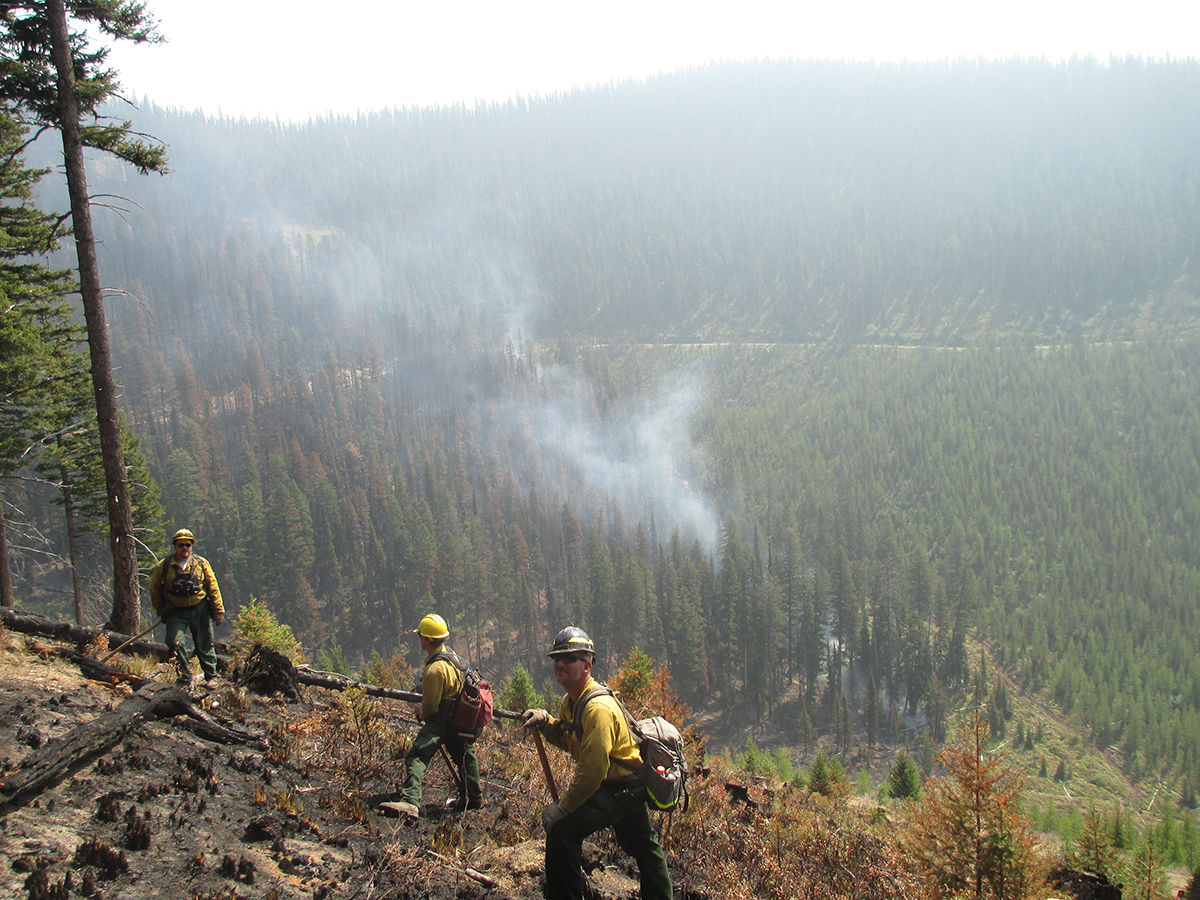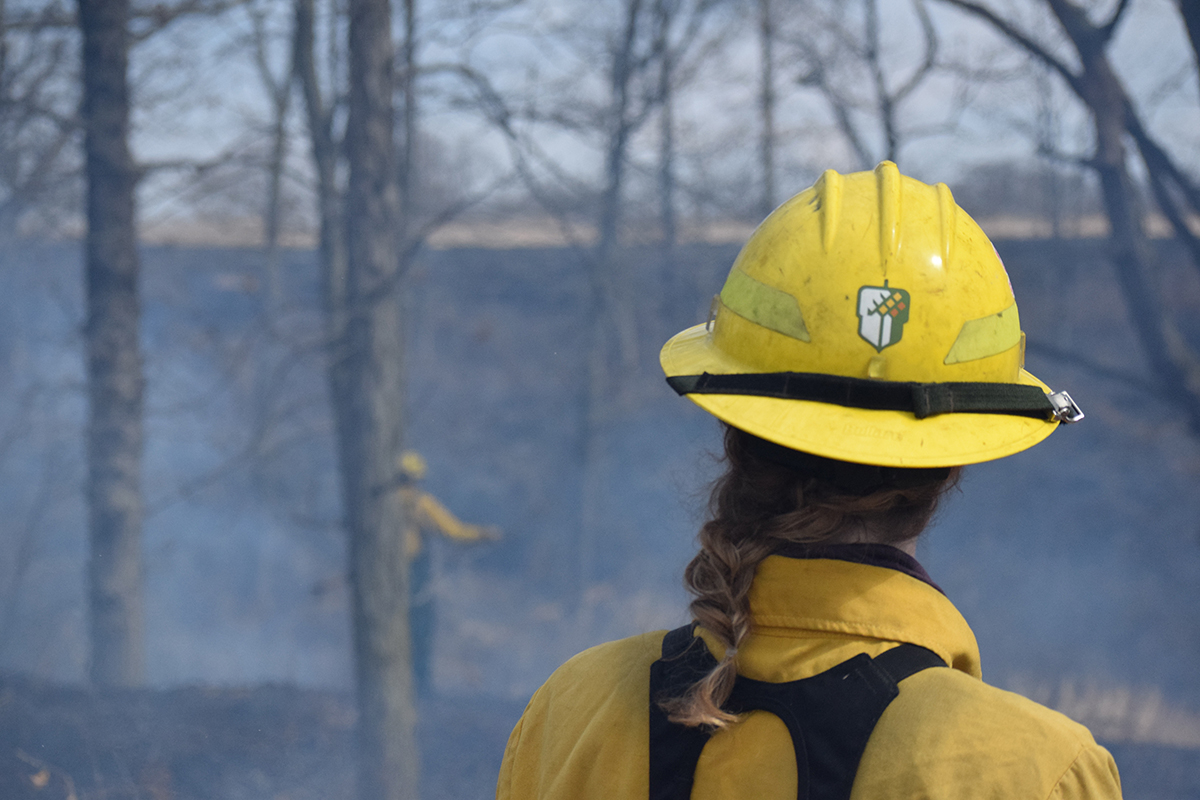Call of the Wildfire
By Joe Jayjack on November 30, 2020 in Blog

INHF Land Stewardship Associate Derek Miner, Land Stewardship Director Ryan Schmidt and Volunteer Coordinator Melanie Schmidt have all gone to western states to help fight wildfires.
Derek Miner was on his way home from fighting wildfires in Colorado this past September when he met a fellow wildfire fighter that didn’t have a home to return to. A fire had burned through the man’s community in Oregon while he was fighting wildfires in Colorado.
“That’s when it really hit home,” Derek said. “The seriousness of this.”
Accelerating climate change has caused wildfires to begin earlier and last longer, turning wildfire season into a year-round reality. This requires more people to help manage fires, and several INHF staff have been able to help while receiving valuable training in fire management.
Derek, Iowa Natural Heritage Foundation’s (INHF) land stewardship associate, is the latest INHF staffer to head west for wildfire duty. Volunteer Coordinator Melanie Schmidt and Land Stewardship Director Ryan Schmidt have also answered the wildfire call. Together, INHF staff have been on six total wildfire assignments since 2015.
“When we think about value to INHF, of course we think about work skills and techniques that we learn,” said Ryan, who was called to western Montana for wildfire duty in 2015. “We take these and apply them to a prescribed fire setting here in Iowa.”
INHF has been applying prescribed fire more in recent years, both on its own properties and on public land with conservation partners across the state. During the 2020 spring burn season, INHF did prescribed burns on 23 properties in 17 counties, burning 996 acres of prairie and woodland to help manage invasive species and promote growth of native plants.
“There’s no doubt we pick up a lot of good stuff by working with other folks and different landscapes,” Ryan said. “The less obvious — and potentially more valuable — benefits of going on a wildfire detail involve leadership development, communication skills and decision-making capacity.”
Derek agrees, especially when you consider the coordination it takes just to get people out to wildfire duty. “To observe how the whole system works, the logistics, it’s amazing,” he said.
ON THE LINE
Iowans that help fight fires in western states typically do so with the Missouri-Iowa Interagency Coordinating Center (MOCC). The MOCC, based in Rolla, Mo., is a collaboration of federal and state agencies that help organize people regionally to respond to natural disasters around the country, including wildfires, hurricanes and floods. Iowans that deploy through MOCC have to complete fire training courses and get certified by the Iowa DNR.
When Derek got the call to head west in late August, he was on a 20-person crew that included six Iowans — three structure firefighters and three conservation professionals. The crews are put together based on qualifications and experience, but the hierarchy usually includes a crew boss, squad bosses and sawyers.
They were first sent to a smaller wildfire outside of Ft. Collins, Colo. They spent two days there before being redirected to the Williams Fork Fire near Fraser in central Colorado, where they spent the remainder of their assignment. The fire was — and is — burning through mostly remote National Forest land.
“We kind of thought we could be on an actual fire line. But the strategy from the top down was to use it for forest management. We protected nearby communities. On the other three sides of the fire, there were no communities to protect, and the forest could really use a burn,” Derek said. “In our National Forests, we’ve been suppressing fire for the last 100 years, and that has been causing the fuel to pile up.”

Using hand tools, Derek’s crew cut three miles of control line (a three-foot wide dirt path, deep enough to get under any organic matter) through rugged terrain, trimming low hanging branches, remove dead material and thinning trees that posed a risk of helping the fire jump along the way.
The goal was to eventually be able to light a fire off of their line that would burn back toward the existing fire when conditions were favorable for controlling the fire, as opposed to waiting until conditions were good for the fire to spread uncontrolled.
As of late October, the Williams Fork Fire has burned more than 14,800 acres and is 75 percent contained, despite fire areas receiving 6-12 inches of snow.
BLAZING THE WAY
Melanie Schmidt is INHF’s most experienced wildfire fighter. In 2016, she was sent to the Deep North Fire in Washington State.
“It wasn’t that common for the Iowa DNR to send a female,” Melanie said. “There was actually some paperwork that was sent back to me because they thought I made a mistake. They didn’t realize I was a woman. I had to write back in the comments ‘I am a female.’”

On that first assignment, Melanie’s crew hiked an hour-and-a-half every morning just to get to their work site. Melanie and the only other woman on her crew “…didn’t take any shortcuts because in our minds we had to justify that we were just as capable. Overall, it was a really positive experience. Some of the guys on our crew told us their daughters would be inspired.”
Melanie’s 2017 experience working on an engine crew in Montana posed other difficulties. “I had a few people suggest I was less capable than I am due to my gender and cultural norms. I was often the only female on the fire line and wasn’t given the respect I deserved. This assignment challenged me in more ways mentally than it did physically but I grew stronger because of it.”
In 2018, when Melanie was dispatched to the Sugar Pine Fire complex in Oregon, she was given more responsibility.
“It helped me grow a lot in my ability to be a leader,” she said. “It really pushed me outside my comfort zone, which is kind of what you want.”
Melanie, Derek and Ryan have brought back technical know-how from their time fighting wildfires, but perhaps more importantly, they returned better members of the conservation community.
“It’s about learning how to be a good leader and take care of people, respect others and the land,” Ryan said. “You have to communicate and make decisions for the betterment of someone other than yourself and stand strong in the face of discomfort, adversity and difficult times. We have the opportunity to incorporate all of this into every facet of our lives, both personally and professionally.”